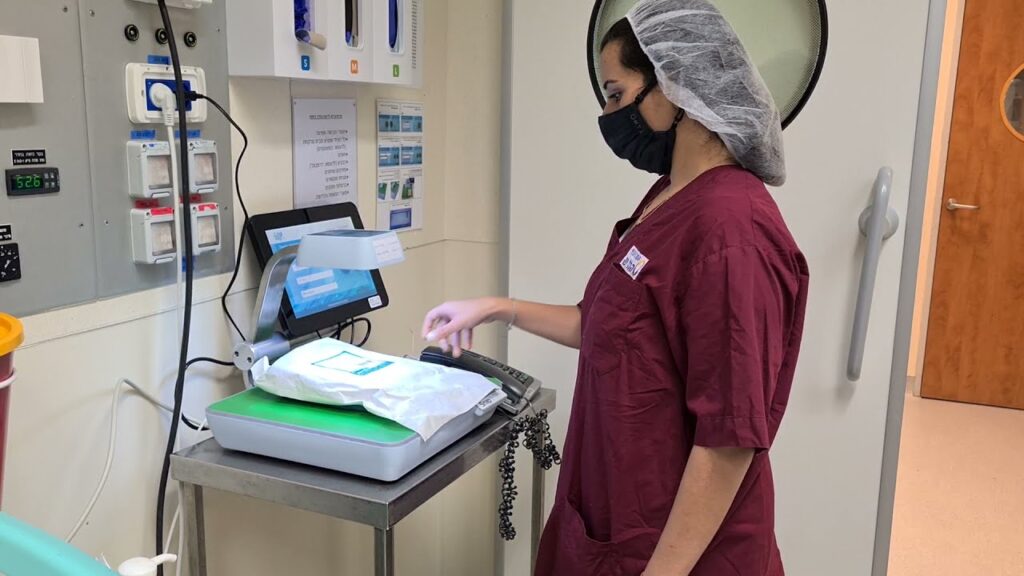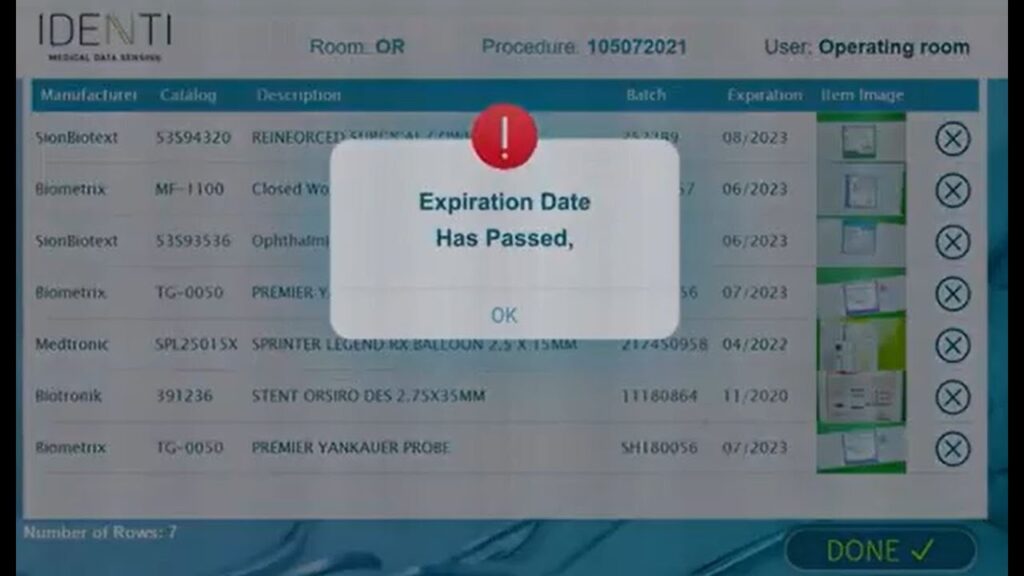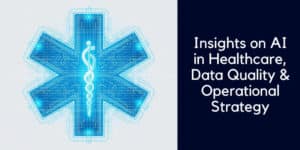What’s inside:
Learn how computer vision in healthcare improves supply tracking, streamlines operations, and recovers lost revenue — all without disrupting patient care. Using AI-powered camera technology, Snap&Go™ automates charge capture and hospital workflows, saving time and money, contributing to an estimated 0.5% improvement in net patient revenue.
In a healthcare system driven by data, accuracy and efficiency are critical, yet many hospitals still rely on fragmented, outdated manual processes to document the use of devices, implants, and supplies in the OR. These gaps are especially costly during procedures, when high-value items aren’t always properly recorded. As a result, hospitals lose an estimated 1–2% of net revenue annually due to missed or incomplete charge capture.
Why Computer Vision in Healthcare Is Closing Operational Gaps
To close these revenue-draining gaps, healthcare organizations are turning to a new generation of AI-powered solutions — led by computer vision. As a type of artificial intelligence, computer vision allows machines to interpret visual inputs and convert them into usable data. In healthcare, computer vision offers a powerful upgrade to traditional supply tracking, helping hospitals move beyond barcodes and manual logging.
IDENTI Medical’s patent-protected Snap&Go brings this capability to life in the OR and procedure rooms. Snap&Go’s easy-to-use image recognition platform, a prime example of computer vision in healthcare, automatically identifies medical implants and consumables, documents their use and cost, checks for recalls or expiration, and synchronizes this data into ERP and EHR systems — all in real time.
Behind the scenes, machine learning continuously refines recognition accuracy with each scan, adapting to new product designs, environmental variables, and clinical conditions. All data is securely stored in a centralized data lake, supporting advanced analytics, audit readiness, and predictive decision-making across the organization.
The Bottom Line: Automation That Pays Off
By harnessing computer vision, AI, and machine learning, Snap&Go captures and records every implant and consumable at the point of use, seamlessly transferring the data directly into the hospital’s EHR and ERP systems. This integration enhances operational efficiency, reduces the cost of care, and provides real-time visibility into supply usage — helping hospitals reduce waste, ensure patient safety, and recover revenue previously lost to manual errors. Accurate charge capture alone can contribute to a 0.5% improvement in net patient revenue — a meaningful gain for large health systems.
Even better, staff no longer need to interrupt procedures for scanning or logging items. A study in The Permanente Journal found that nurses spend up to 35% of their time on documentation. Instead, Snap&Go quietly works in the background, supporting documentation and allowing nurses to stay focused on patient care.

What Snap&Go’s Computer Vision Can Do:
- Automatically identify medical items at the point of use
- Monitor and document supply usage in real time
- Generate structured data for billing, compliance, and inventory
- Seamlessly integrate data with EHR, ERP, MMIS, and vendor systems

Real-Time Image Recognition at the Point of Care
With advanced image recognition, Snap&Go captures and tracks every item used in real-time. Whether a surgical implant, catheter, or high-value disposable, the platform reads the entire package in three seconds. It extracts full product information, even when barcodes are missing, damaged, or duplicated, overcoming limitations of the old barcode system. In seconds, it converts images into machine-readable data, feeding clean product data into downstream hospital systems for billing, inventory, and supply chain planning.
Hospitals gain:
- Complete visibility into inventory and product usage
- Accurate, item-level traceability for high-value and billable items
- Fewer supply chain blind spots, overstocking, and stockouts
Seamless Integration Across Hospital Systems
Snap&Go’s AI platform connects directly to EHRs, ERPs, MMISs, and vendor portals — syncing structured product data automatically into existing workflows. Nurses and techs no longer have to pause mid-procedure to write down supply details or correct errors later. When manual review is needed, IDENTI Medical’s back-office team ensures quality assurance and data completeness.
This results in:
- Fewer documentation delays and corrections
- Smoother surgical workflows
- More time spent on patient care
Computer Vision Improves Charge Capture and Revenue Integrity
Accurate charge capture directly impacts a hospital’s financial health. Errors in supply capture can lead to missed charges, denied claims, and delayed reimbursements. Snap&Go addresses this by capturing 100% of supplies, including charge-sheet items and consigned inventory, at the point of use, reducing the risk of omissions or billing inaccuracies.
Hospitals benefit from:
- Reduced revenue leakage
- Automatically-populated billing and case records
- Faster time to reimbursement
- Fewer denials and improved audit readiness
Supporting Safety, Compliance, and Regulatory Requirements
Snap&Go goes beyond billing to support patient safety and regulatory compliance. The system flags expired products before use and links every product to the patient record. In the event of a recall, hospitals can instantly trace affected items to patients, supporting faster response and audit readiness.
Key benefits:
- Automated alerts for expired products
- Real-time patient-to-product traceability
- Robust data for Joint Commission, FDA, and internal QA reporting

Why Computer Vision Is Becoming Essential Infrastructure for U.S. Hospitals
Manual documentation, barcode limitations, and disconnected data systems are holding hospitals back. With rising costs, shrinking margins, and growing regulatory demands, hospitals can no longer rely on outdated tools.
Computer vision in healthcare isn’t just an upgrade; it’s essential infrastructure for hospitals looking to improve operational and financial resilience. With Snap&Go’s unique, market-proven solution, hospitals can unlock measurable improvements in efficiency, compliance, and revenue — all while keeping clinicians focused on what matters most: patient care.






